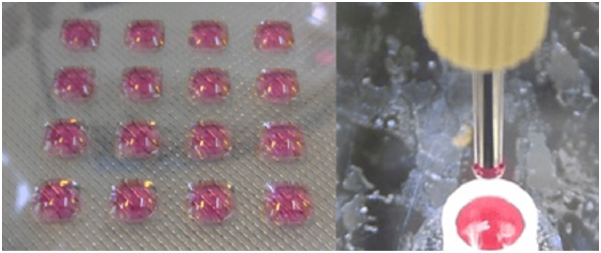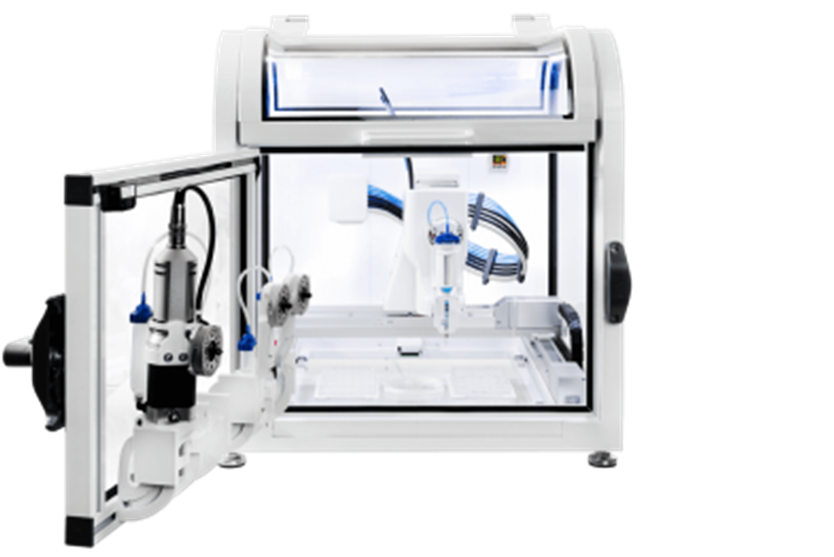By Brinter Ltd.
Brinter® Bioprinters: 3D printing tablets at point-of-care
The pioneering bioprinting company Brinter offers an accessible gateway into the exciting new world of 3D biomedical printing that includes revolutionary applications in drug formulation, personalized medicine, and microfluidics.
Bioprinting also allows companies and academia to conduct research and development of personalized therapeutic drugs for proof-of-concept studies and formulation tests with the leading-edge capabilities of Brinter® bioprinter. Furthermore, 3D bioprinting also enables the design of customized drug applications using microfluidics and nanoparticle fabrication for more effective dose delivery.
In short, biological 3D printing opens the door to an entirely new ‘on demand’ approach to drug manufacturing that is far more in tune with a 21st-century vision of digitally integrated pharma value chains and individually printed personalized medicines at the point of care.
What is bioprinting?
Biological 3D printing (3D bioprinting) allows the individualization of medication according to the needs of the patients, their genetic profile, as well as their health condition. Bioprinting can revolutionize the way tablets are manufactured and, thus, move medical treatment away from a “one size fits all” approach towards printing personalized medicines.
In order to appreciate how this is possible, it is important to understand what is 3D bioprinting to see how the technology works and how it can be applied to life science applications.
Bioprinting (which always means 3D bioprinting) combines the technology of 3D printing with the use of biologically derived materials (bioinks). It has been used in medicine since around 2007, mainly so far to replicate natural tissues, bones, and blood vessels in the body, particularly in connection with drug research and, most recently, as cell scaffolds to help repair damaged ligaments and joints. A 3D bioprinter is able to distribute biomaterials like living cells and natural or synthetic hydrogels in layers in an ‘additive manufacturing’ process, with bioink materials fed into the printer solidifying as they emerge to create a 3D object. This can be combined with the science of microfluidics which alters the behaviour of fluids through micro-channels to mix multiple bioink components on the fly during printing and print even gradients of cell concentrations or bioactive molecules. This can be used to design highly customized ‘smart drug’ medicines, manufactured with unprecedented precision. Furthermore, 3D bioprinting that uses computerized design can be miniaturized down to micro-scale, allowing it to handle nanoparticle fabrications for more effective dosage delivery.
All these capabilities can be applied to drug manufacturing with the Brinter® 3D bioprinting platform able to combine several different printing technologies into a single print job, creating possibilities to print controlled drug delivery devices and formulations having, for example, an outer shell of one material filled with multiple active pharmaceutical components.
3D bioprinting tablets at the point-of-care:
The technology of 3D drug printing has been successfully proven in animal medicine, with researchers from the Pharmaceutical Sciences Laboratory at Åbo Akademi University together with Nanoform Finland Oyj using the Brinter® One 3D bioprinting platform and the Pneuma Tool print head to 3D print tailored ChewTs based on gabapentin for veterinary use.
For GBP chewable tablet production, the Åbo Akademi team developed a semi-solid extrusion (SSE) biomedical 3D printing technique that deposits a gel or a paste according to a pre-determined design. They used the Brinter® One 3D bioPrinter fitted with the Pneuma Tool print head, which enables low to medium-viscosity inks, pastes, or gels to be dispensed with the aid of compressed air. The team also utilized the browser-based Brinter® printing software to control layer height, shell, fill and angle settings, along with print speed and dispensing pressure to achieve therapeutic doses ranging from 10 mg to 200 mg.
Using these 3D bioprinting techniques, the team was able to produce very precise tablet veterinary dosage forms of the anti-convulsant gabapentin (GBP), potentially filling a severe gap in the market. Since there are currently few to no gabapentin tablets available in veterinary markets, pets are being treated with compounded dosage GBP forms or off-label use of human tablets being sub-divided ‘by eye’, raising significant risks of under or over-dosing.
Using this setup, the team found that a set of eight 10 mg GBP 3D printed tablets (printlets) could be produced in just over two minutes with the potential to accelerate this further by increasing print speed and air pressure. They also observed that the average wet weight of the printlets correlated very closely to theoretical design size and dry weight, making SSE 3D printing highly suitable for preparing individually tailored dosage forms.
Bioprinted medicine advantages
3D bioprinted drug prototypes may provide an increased understanding during early drug development, decreasing time-to-market and the risks of nonadaptation.
A 3D bio printer can be used for drug printing anywhere in the world as long as the ingredients are on hand, radically cutting shipping costs and tariffs. It also enables on-demand dispensing in various settings, such as pharmacies and hospital wards, for improved medicine access, reduced wastage, and accelerated discharge times from hospitals.
The flexibility and configurability of the 3D bioprinting process allow several factors like the size, dose, appearance, and rate of drug delivery to be controlled and easily varied.
Distinctively among bioprinting companies, the Brinter® 3D bioprinting platform is almost endlessly adaptable and is able to combine several different printing technologies into a single print job.
The highly modular Brinter® approach to design and fabrication of 3D bio printers means each Brinter® 3D bioprinter is effectively custom-built and infinitely adaptable, being able to be fitted with a wide array of proprietary fluidic controllers, actuators, high-frequency solenoids and valves, with precision sensors to control multiple flow parameters and manipulate multiple fluids individually for active mixing, flow focusing, sorting, and structure generation. This creates a highly adaptable 3D bio printer platform that can be used as a versatile tool for bio 3D printing of a wide variety of drug forms.
The Brinter® technologies most relevant to drug printing, with emphasis on controlling flows of a wide range of liquids and gels, include a selection of print heads for printing low to medium-viscosity hydrogels, silicones and pastes at various temperatures and viscosities or hot extrusion of small granules of thermoplastic material or powder fillers, solenoid valve actuated precision dosing of microdroplets down to 10 µL, along with heated or cooled print bed to provide a temperature-controlled environment for the printed structure.
Resources
Click on Semi-solid extrusion 3D printing of tailored pharmaceutical chewable tablets for background information on the study.
Click on Compounding Tailored Veterinary Chewable Tablets Close to the Point-of-Care by Means of 3D Printing to access the full study.
Click on BioPrinting Applications for further information.


















